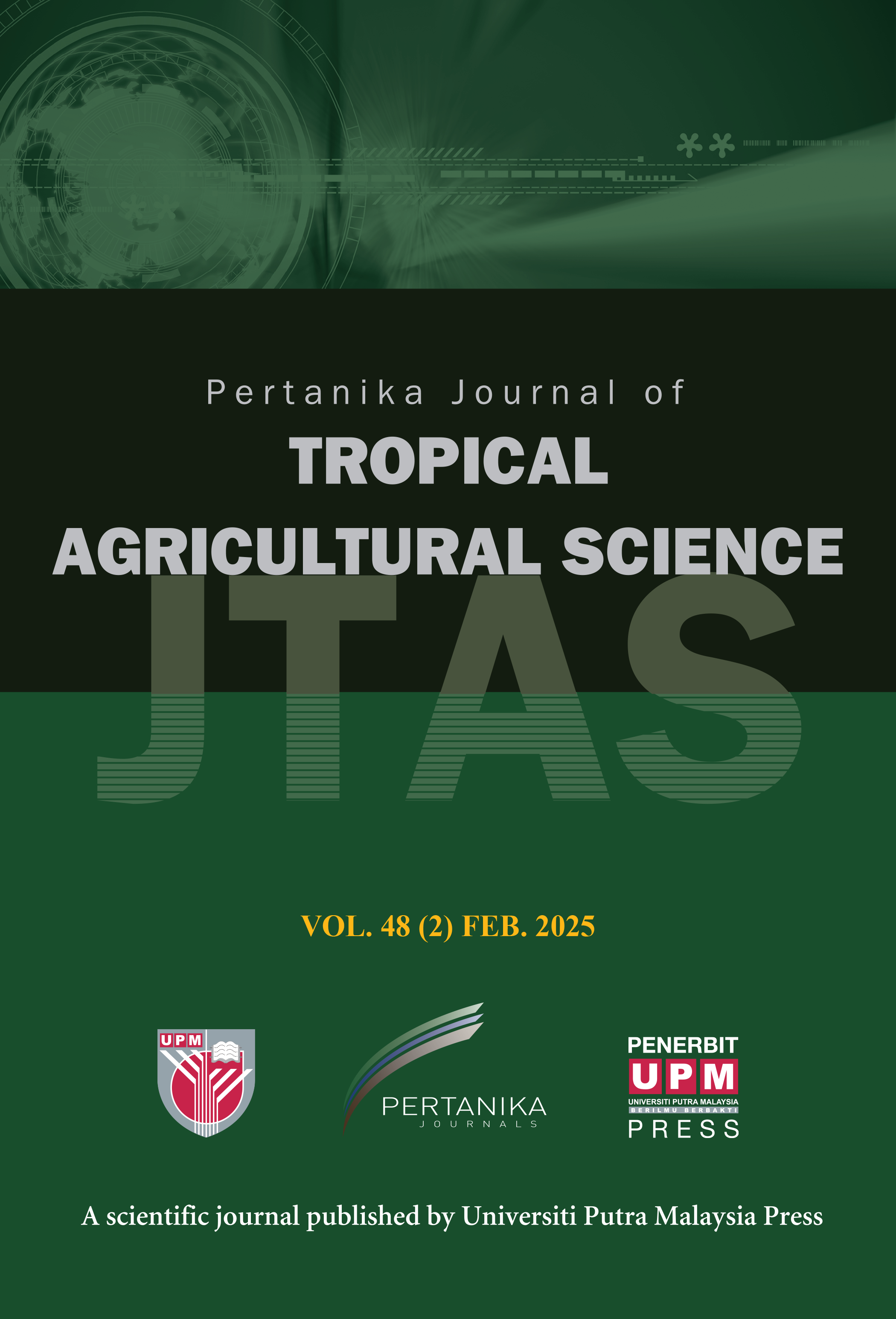PERTANIKA JOURNAL OF TROPICAL AGRICULTURAL SCIENCE
e-ISSN 2231-8542
ISSN 1511-3701
Effect of Pennisetum purpureum cv. Gama Umami and Calliandra calothyrsus Silage on Growth Performance of Thin-Tailed Sheep
Maudi Nayanda Delastra, Nafiatul Umami, Endang Baliarti, Suci Paramitasari Syahlani, Tri Anggraeni Kusumastuti, Andriyani Astuti, and Yogi Sidik Prasojo
Pertanika Journal of Tropical Agricultural Science, Volume 48, Issue 6, November 2025
DOI: https://doi.org/10.47836/jtas.48.6.20
Keywords: Calliandra calothyrsus, digestibility, nitrogen balance, P. purpureum cv. Gama Umami, sheep performance, silage
Published on: 2025-11-25
The issue of ruminant livestock feed shortages can be addressed by utilizing innovative feed that is both nutritionally rich and available year-round. The study aimed to examine how silage influences the growth performance of thin-tailed sheep. The study was conducted in Sleman, Yogyakarta. The study involved thirty thin-tailed ewes, aged 10 to 12 months and weighing 15.03±1.09 kg. A completely randomized design (CRD) with a unidirectional arrangement was applied, involving three diet treatments and ten replications. In this study, the silage consisted of Pennisetum purpureum cv. Gama Umami and Calliandra calothyrsus in a 70:30 ratio, respectively. The diets were as follows: T0 = 60% concentrate and 40% water spinach straw, T1 = 40% concentrate and 60% silage, and T2 = 60% concentrate and 40% silage. The study focused on variables such as growth performance, apparent nutrient digestibility, and nitrogen (N) utilization. The data were examined through analysis of variance (ANOVA), followed by Duncan’s new multiple range test (DMRT) for comparisons of significant differences. The performance indicators for treatments T0, T1, and T2 were as follows: dry matter intake (DMI) of 57.99, 60.12, and 65.57 g/kg LW0.75/day, respectively; crude protein intake (CPI) of 5.98, 8.36, and 6.78 g/kg LW0.75/day; average daily gain (ADG) of 38.96, 43.94, and 49.10 g/sheep/day; N intake of 0.90, 1.34, and 1.09 g/kg LW0.75/day; N digestible of 0.70, 0.95, and 0.80 g/kg LW0.75/day; and N retention of 0.56, 0.85, and 0.70 g/kg LW0.75/day. Therefore, no single dietary treatment was universally superior, but each offered unique advantages.
ISSN 1511-3701
e-ISSN 2231-8542




